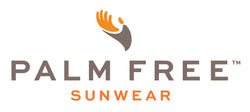Driving on the Sunny Side: Taking Sides on Skin Cancer
Unless you’re a mail deliverer, you probably sit on the left side of your vehicle in order to drive to work, school, or a cross country road trip. Recent studies suggest that an increasing number of driving Americans are finding slightly higher incidence of cancer, about 7%, and photo-aging, which is visible damage to the skin caused by the sun’s ultraviolet radiation, usually in the form of wrinkles and brown spots, on the left side of the body more than the right. The incidence tends to be seen frequently on the face, neck, arms and hands. Luckily, there are multiple approaches to prevent this one-sided sun exposure.

Most North Americans know about the importance of sunscreen, and how effective it can be in preventing skin cancer but seem to neglect its importance when driving. In a recent study, 38% of people interviewed reported regular sunscreen use, and this statistic decreased to 15% when asked about sunscreen use in a car. This may come from some misunderstanding of how effective windows are at blocking out harmful UV radiation. Interestingly, most car windows do filter out all of the UVB radiation, which is responsible for most sunburns. Unfortunately, UVB rays only account for about 6% of the suns ionizing radiation. The rest comes from UVA, which is the deeper penetrating wavelength responsible for higher rates of squamous cell carcinoma and photo-aging.
The degree to which window glass protects from UV radiation depends on the type of glass, the shade of the tinting, and the presence of UV absorbing film or lamination. According to one study, clear car window glass transmitted 62% of harmful UVA radiation, but can transmit upwards of 80% in some cases. Meanwhile adequately tinted windows transmitted as little as 11.4% of UVA.
So what can we do to protect ourselves? Here are some tips and tricks to help prevent skin cancer in your car:
- Always leave your windows up when it is sunny.
- Invest in UV tinted windows for your car.
- Use a shade screen.
- Wear protective tightly knit clothing such as long sleeves or driving gloves (see blog posting Sun Protective Clothing Tips…).
- Keep sunscreen next to your car keys, so you don’t forget to apply sunscreen on face, neck and arms before driving (see blog posting Sunscreen Simplicity: Know What’s On Your Skin).
- Do not store chemical sunscreen in your car, as heat can reduce the effectiveness of sunscreen over time.
- Invest in mineral based physical sunscreen (such as zinc oxide or titanium dioxide), which will NOT break down as much in the heat of a car. EltaMD is my preferred favorite as it has 9% zinc oxide and 7% titanium dioxide with a slight flesh-tone tint reducing the whitish glow from zinc based sunscreens.
Dermatology clinicians are highly aware that the left side of the face (driving side in the US) receives most of the sun’s aging effects.

References:
Dennis P. Kim, MD, Indy Chabra, MD, PhD, Pawan Chabra, MA, and Evan C. Jones, MD, MPH, “Sunscreen use while driving” J Am Acad Dermatol, Volume 68, Number 6. June 2013, Web. Date accessed: 8/11/2015
Kelly G. Paulson, PhD, Jayasri G. Iyer, MD, and Paul Nghiem, MD, PhD “Asymmetric lateral distribution of melanoma and Merkel cell carcinoma in the United States” J Am Acad Dermatol, Volume 65, Number 1. July 2011, Web. Date accessed 8/11/2015
Photos:




